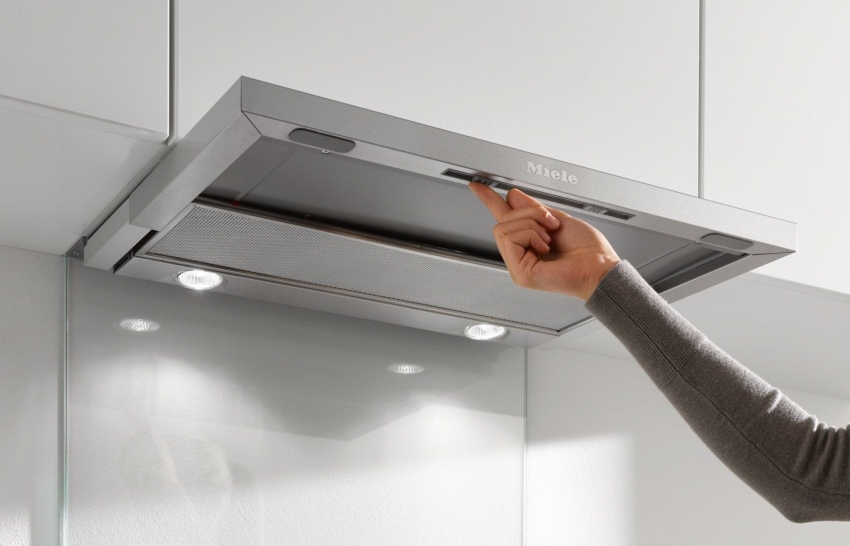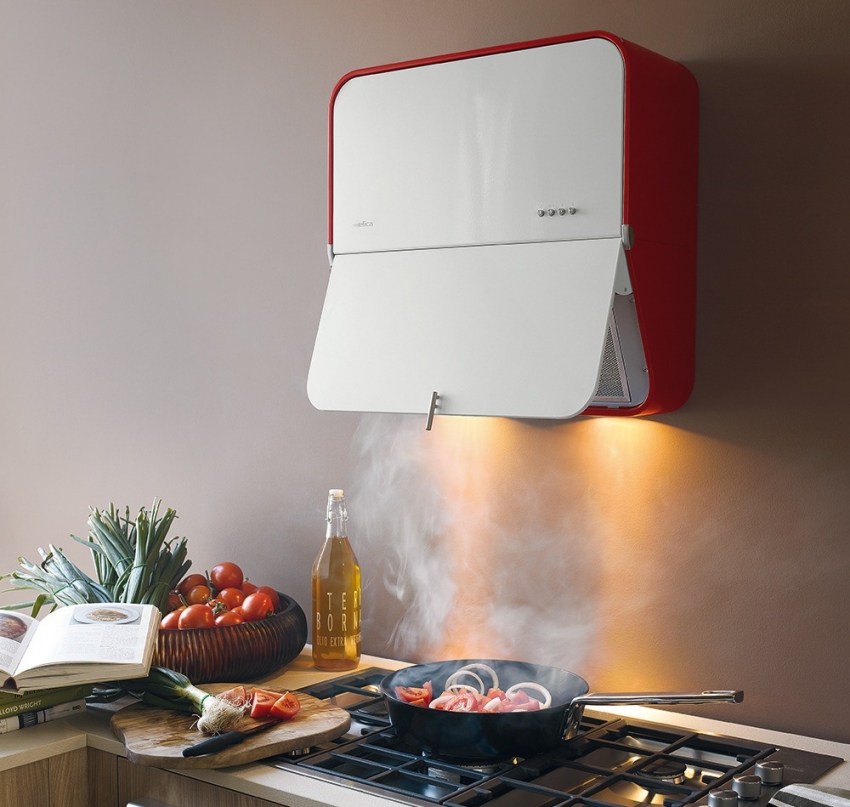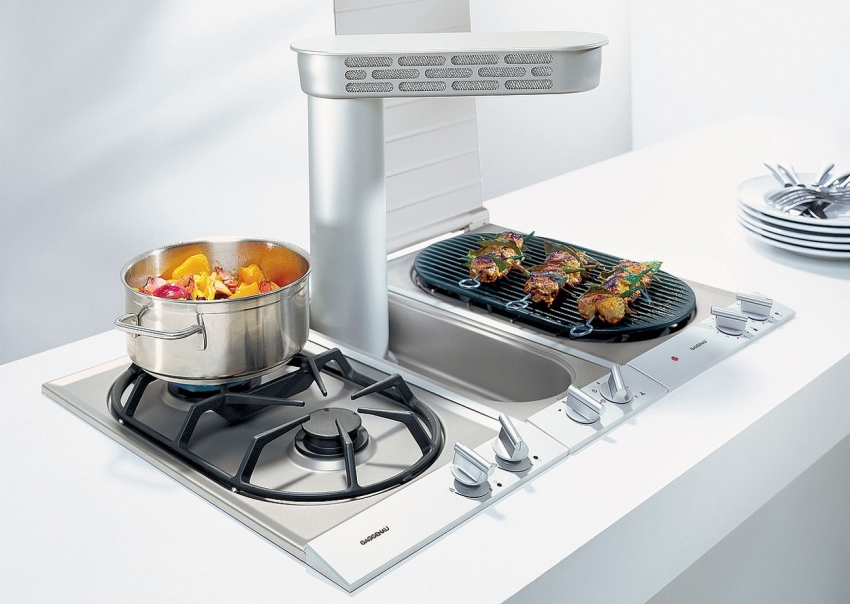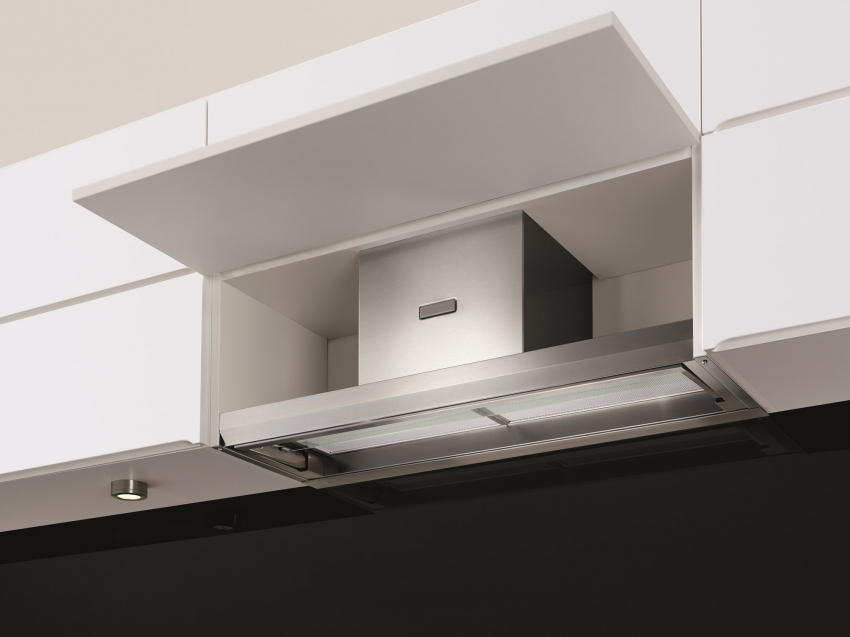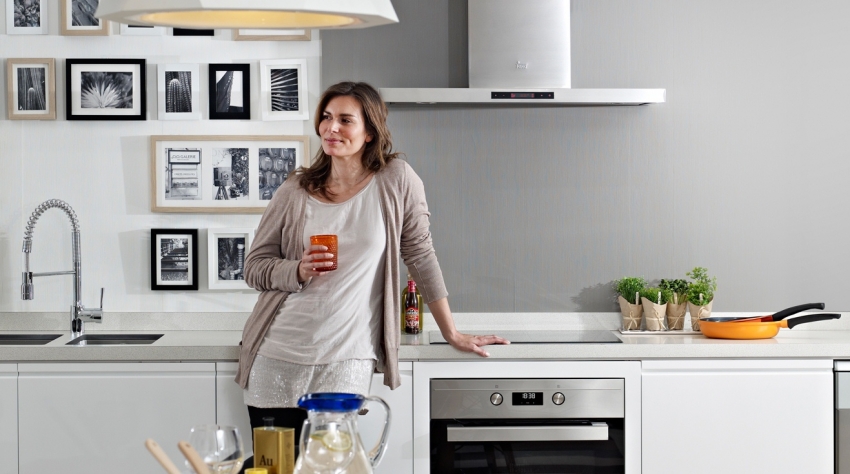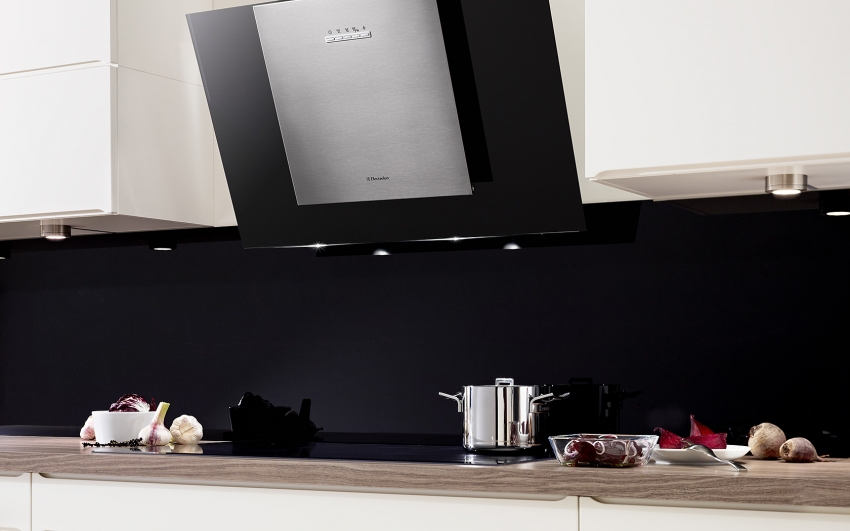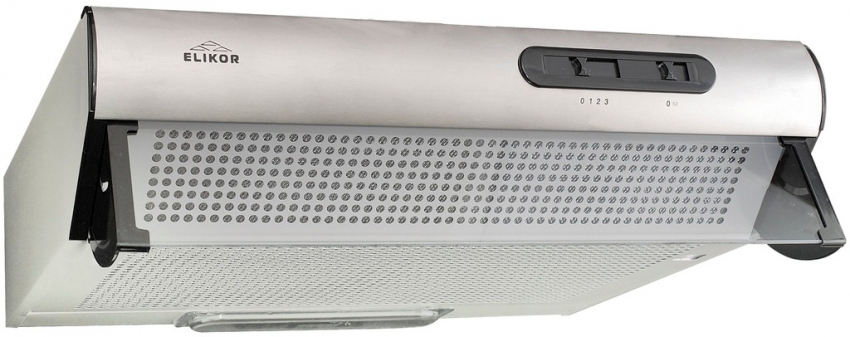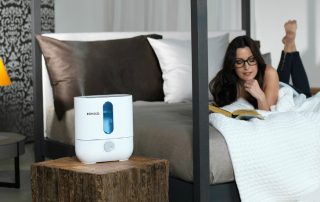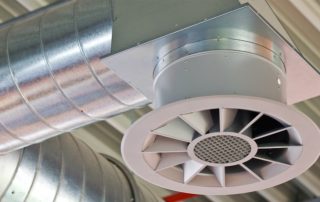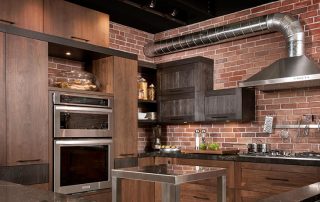A properly selected hood can clean the air from harmful impurities and unpleasant odors that form during the cooking process. Modern manufacturers offer a wide range of hoods, different in type, mode of operation, function and design. The most popular option is a built-in kitchen hood, which takes up a minimum of space, which is so important for small spaces.
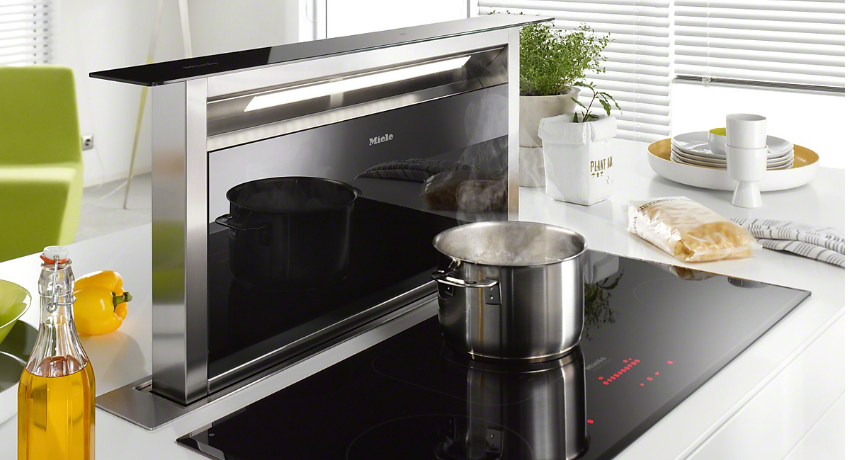
The cooker hood is an indispensable attribute of a modern kitchen, which allows you to keep clean and fresh air in the kitchen.
Content [Hide]
What is a built-in cooker hood
The cooker hood is a unique invention that is able to capture grease, fumes, soot and odors during cooking in the kitchen, preventing them from spreading throughout the apartment and settling on kitchen furniture and walls.
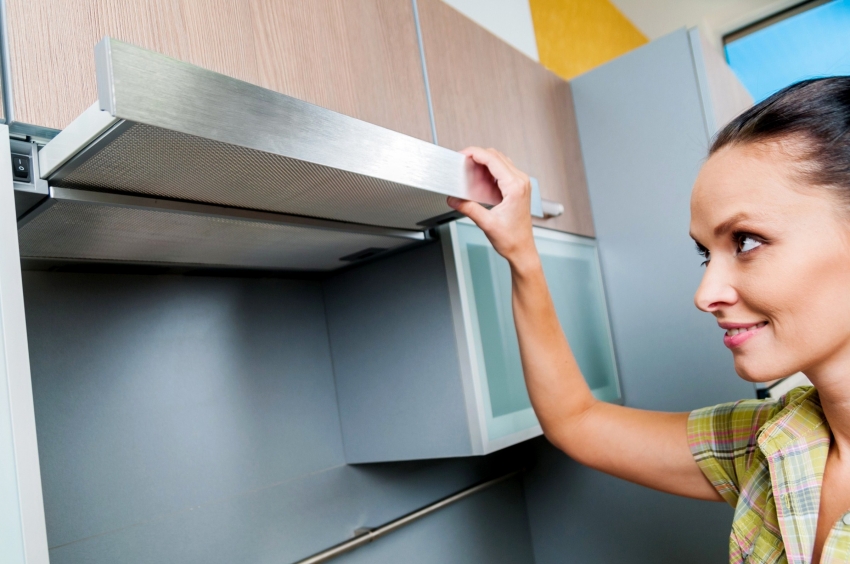
Modern built-in hoods designed to maximize space savings in the kitchen, while doing an excellent job with the task
Any hood works on the principle of forced ventilation. Capturing polluted air, it passes it through a filter installed inside the device, and thereby cleans it of grease, soot, combustion products and unpleasant odors. The purified air enters the room back (in recirculation mode) or is discharged into the ventilation shaft (when arranging a kitchen hood with outlet to ventilation).
The filters, which are equipped with each model of the hood, regardless of the manufacturer and type of device, are located inside the device body. On its front part there is a control module with an electronic, mechanical or slider panel.
All modern hoods differ in the way they are attached to: built-in, domed and suspended.
The built-in hood for the kitchen is the most popular and demanded. It is mounted inside a wall cabinet, which is located above the hob, or in a worktop. This allows you to hide the device, which gives the kitchen completeness and harmony.
Built-in hoods can be vertical or horizontal.
Helpful advice!The parameters of the vertical hood are not inferior to the dome hood. However, it is more compact and easy to use.
Performance characteristics of built-in hoods
All models of built-in hoods differ in certain parameters.
The first parameter to pay attention to is the size of the hood and the design of the drawer. The built-in hood is completely hidden in a wall cabinet that has no bottom. The working area of the hood can be increased by means of a retractable screen.
If the headset is already installed in the kitchen, then the device is selected based on the inner space of the wall cabinet, where it will be located. Hoods come in various sizes, ranging from 45 cm to 90 cm, which will not cause difficulty in choosing the required type and size for a particular case. However, one should not forget that the size of the hood should be similar to the dimensions of the hob. It is better if the hood covers the hob in its area, and not vice versa.

One of the novelties on the forced ventilation market is the cooker hood, which is sold complete with the hob
Built-in hood 45 cm, ideal for small kitchens with an area of 6 sq. m., where the stove for 2-3 burners is located. Mounting a built-in hood 45 cm in a cabinet does not imply additional steps associated with adjusting the size of the furniture
The 50 cm built-in kitchen hood has similar advantages. Its design is very compact and does not require any additional steps during installation. At the same time, the productivity of a 50 cm hood built into the cabinet does not exceed 400 cubic meters. m per hour. Therefore, it will not be possible to fully clean a medium-sized kitchen with a 50 cm wide range hood.
The standard dimensions of the hobs assume the use of built-in kitchen hoods of 60 cm. They are able to provide the necessary performance, thanks to powerful motors, which is ideal for kitchens with an area of 9 square meters. m. At the same time, such a hood significantly saves space due to its design.
For a large kitchen, 12 sq. m or more, a built-in hood for a kitchen of 90 cm is ideal. It is also installed above a dimensional stove with 5 burners.
All built-in hoods are equipped with a filtration system. Air purification can take place in one or two stages.
The flow hoods are equipped with a mechanical filtration system without installing a carbon filter. Here the polluted air is cleaned of combustion products, grease and soot. Most models are equipped with a steel or aluminum filter, which must be cleaned regularly as it gets dirty. It does not require replacement. Its service life is unlimited and reaches that of the hood. Disposable filters are a replaceable plastic cassette with synthetic filler, which can be synthetic winterizer or non-woven fabric.
Models that operate in recirculation mode are necessarily equipped with a disposable charcoal filter. It is he who is able to neutralize extraneous unpleasant odors that are formed during cooking. Such a filter requires regular replacement. After the end of the period of operation, after 3-6 months, depending on the intensity of the device, it is necessary to replace charcoal filter for hood, which can be bought in any home appliance store at a price of 1.5 thousand rubles.
Built-in hoods can be with one or two motors. This affects the quality of air purification, the performance of the device and the noise level during its operation. The more the extraction capacity is required, the more powerful the motor will be. And this affects the noise level, which will also be higher. Usually built-in hoods are equipped with medium power motors to reduce the overall noise level of the unit.

The built-in hood allows not only to keep the kitchen clean, but also to economically illuminate the work area above the hob
The performance of the device determines the total amount of polluted air that can be cleaned per unit of time. It is very easy to calculate it. It is necessary to multiply the volume of the room by a factor of 10 or 12, which indicates the air exchange in the room per hour. This value will correspond to the minimum performance required for the given room.
Helpful advice!Another 20% should be added to the minimum performance value and the device should be selected based on the obtained value.
Additional features of exhaust devices
On the front of the hood housing there is an electronic module panel that controls the hood. In turn, the panel can be push-button, touch and slide. The operating modes of the hood with a push-button control system are controlled by switching the button. The slider panel assumes moving the mechanical slider to the place corresponding to the required operating mode. Touch control is carried out by touching your finger on the desired area. When the command is accepted, the LED on the panel lights up.
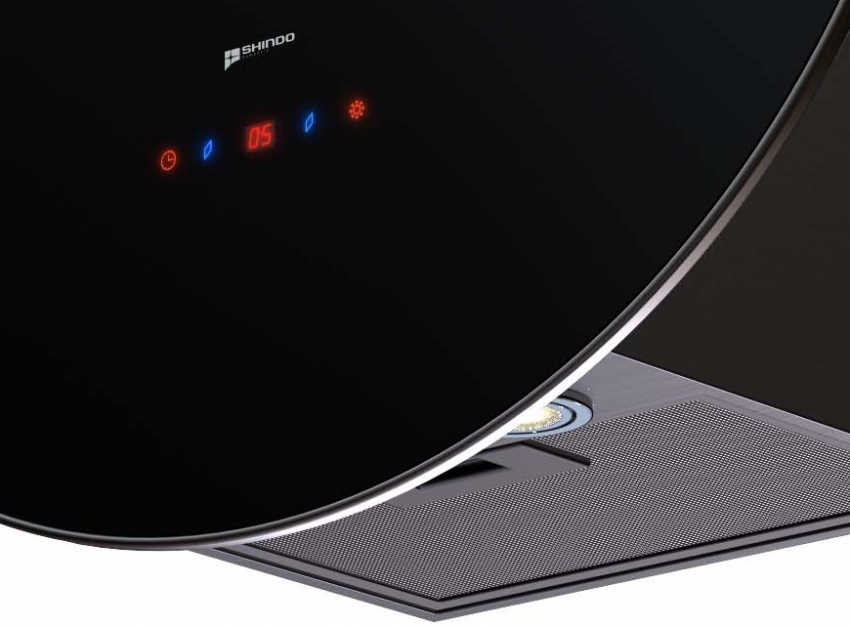
Some models of hoods have additional functions such as a built-in player, clock, LCD display and others.
Modern hoods are equipped with many additional functions that are aimed at facilitating their operation and creating additional comfort. The device can have an interval switching function, due to which the hood periodically switches on by itself, providing fresh air to the room. The hood can be equipped with a run-on function that allows the fan to run for a while after the hood is switched off. This allows you to achieve ideal cleaning of polluted air.
More expensive modern models are equipped with an LCD screen with the ability to connect a DVD player or PC, a meteo system, which allows you to display the weather forecast on the display. This is done thanks to the weather station, which is located outside the house and is connected to the hood.
Types of built-in kitchen hoods
One of the important criteria by which all models of built-in hoods differ from each other is the design of the device. There are fully recessed, canopy and telescopic hoods.
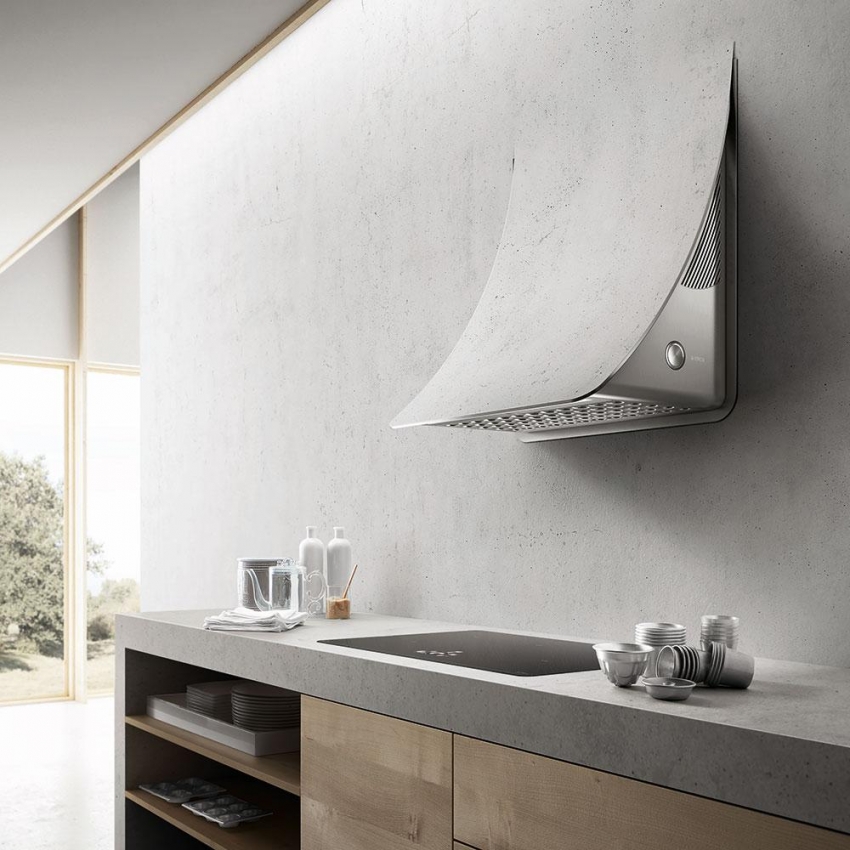
Depending on the interior of the kitchen, you can choose an interesting design hood built into the wall, but such a solution requires planning even at the stage of repair
Fully built-in devices are the best fit for small kitchens. The cooker hood is completely mounted in a wall cabinet or worktop, without taking away free space and without attracting attention, as you can see in the photo of built-in hoods, which complement any room design. Such a device can be supplemented with a charcoal filter, which will allow the hood to operate in recirculation mode.
The design of the telescopic hood assumes an increase in the working area by pushing the surface of the device forward. This option provides greater extraction performance and makes it easier to operate this device.
All built-in hoods are divided into flow and recirculation. The flow-through ones must be additionally equipped with an air outlet that connects the hood to the ventilation hole. They are more expensive but have better performance. Recirculation hoods pass air through a carbon filter system and return it back to the room. They do not require additional costs for the installation of an air exhaust system in the ventilation of the house.
There are models with a recirculated mode of operation that are capable of providing efficient operation, but this entails a high cost of the device and high energy costs associated with its operation.
Helpful advice! For large kitchens, you should choose hoods with air exhaust for ventilation.
There are models that can work in two modes. The air is purified using a grease filter, which frees the air from harmful impurities, and a carbon filter removes unpleasant odors. Then the cleaned air can be discharged into the ventilation system through the air duct, or can be returned back to the room. Depending on the type of activity in the kitchen, you can switch to the desired operating mode of the device.
Built-in hood installation options
Built-in hoods can be installed in a cabinet or worktop. If you choose a model that is mounted in a cabinet, you must take into account its dimensions and dimensions for embedding. The cabinet must be the same size as the ventilation device, which in turn must match the size of the hob to maximize the capture of contaminated air from its working area. You can easily install the built-in hood in the cabinet yourself. It is enough to fix the device in its lower part using self-tapping screws, and then install the entire hinged structure on the wall.
An important rule is the observance of the required hood height above the gas stove. The device must be placed 75 cm away from gas hob and 65 cm - from electric.
Helpful advice! The established standards should not be ignored. If the distance of the hood above the gas stove is less, this can lead to overheating of the device and its fire. An increase in the distance will reduce the quality of air trapping and thus make the hood work ineffective.
The cooktop hood is a curiosity. However, such a vertical arrangement of the device makes it possible not to clutter up the upper cabinets in the event of additional installation of an air outlet, or not to install them at all above the stove. The device is installed at an optimal distance from the stove. There are options that fit directly into the non-stick hob.
Related article:
How to choose a range hood for the kitchen: professional advice and useful recommendations
Tips for choosing a hood. Varieties of installations, their advantages and disadvantages. Features of installation. Rating of world brands.
The cooktop-mounted hood can be stationary or retractable. It can also operate in recirculation mode or flow through.
There are models of hoods that are built into the ceiling, not into the closet. Also, most manufacturers produce corner options for built-in hoods that are suitable for sloped furniture.
Features of installing a hood for a kitchen with a vent into the ventilation
Before installing the hood above the stove, it is necessary to sketch the entire structure, which consists not only of a ventilation device, but also of an air duct. The length of the air duct should be kept to a minimum so as not to overload the motor, increase the noise level and ensure efficient operation of the device. To do this, the hood above the gas stove should be located as close as possible to the ventilation hole in the kitchen wall.
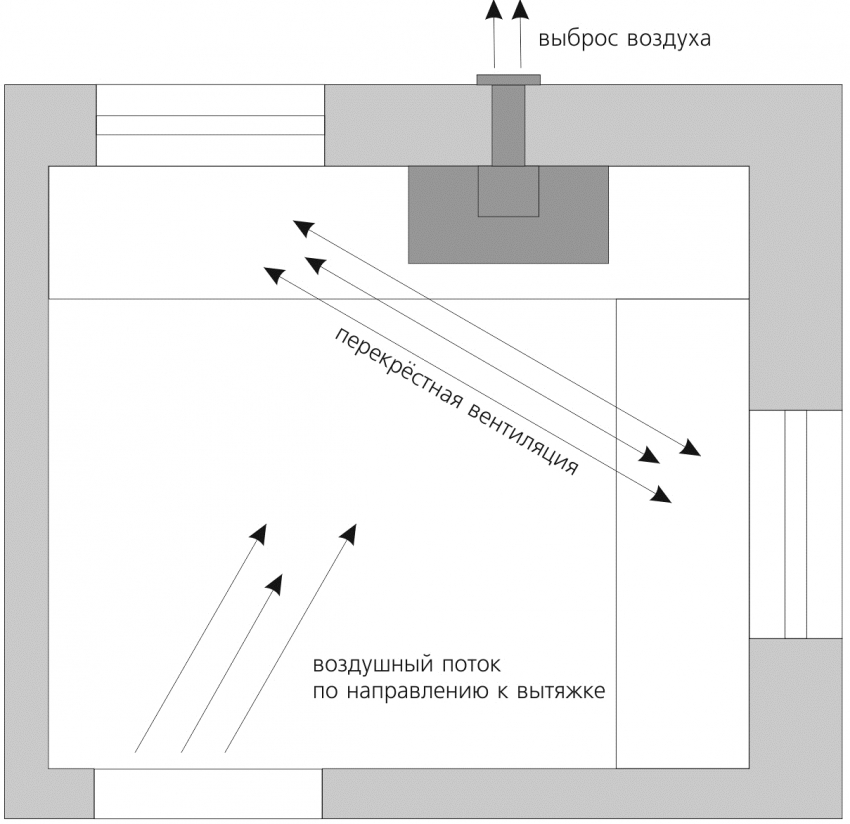
When planning the placement and installation of the hood, the size of the room and the direction of the air flow must be taken into account.
The hood in the kitchen can be flexible (corrugated pipe) or rigid (metal or plastic box). The use of a corrugated pipe facilitates the installation of the air duct, but degrades the operation of the device, due to the resistance created due to the uneven surface of the walls.
When choosing plastic box no more than one elbow should be used that provides a 90 degree bend in the duct structure so as not to create additional resistance. All joints must be sealed with sealant. If square and round elements are used, adapters should be purchased.
The diameter of the duct must match the outlet of the hood. If the pipe has a smaller cross-section, this will create an additional load on the fan, which can lead to its breakdown. Also, such a discrepancy will increase the noise level when the device is operating.
The ventilation duct must not be completely blocked after the installation of the air duct. For this, you can install a special grid with a check valve.
Helpful advice!If the ventilation hole in the wall is too small to install the grille, you can buy an air duct with a built-in check valve.
Review of popular brands and photos of built-in hoods in the interior of the kitchen
The cost of the hood is influenced by the functionality and appearance of the device. If you choose from budget options, then you should give preference to hoods from manufacturers such as Krona, Elikor, Hansa, Gorenje, Teka, which mainly produce built-in hoods of 50 cm and 60 cm. An exhaust device can cost 3-8 thousand rubles on average, but its productivity will not exceed 450 m³ / h.
For example, the built-in kitchen hood 50 cm Hansa harmoniously fits into any kitchen interior, does not emit unpleasant noise during operation and does an excellent job of cleaning the air in small rooms. The average price of a model is 2.5 thousand rubles.
The built-in hood Krona 50 can be easily mounted in any wall cabinet and can operate in recirculation mode or with air extraction for ventilation. The price of the device is 3.5 thousand rubles.
More expensive brands are Bosch, Lex and Electrolux. They produce the quietest hoods in which the noise level does not exceed 45 dB. At the same time, the productivity of such hoods reaches 800 m³ / h and more. The cost of equipment depends on its capacity and ranges from 11-40 thousand rubles.
If you need to choose a non-standard 90 cm built-in hood that is suitable for large kitchens, then you should give preference to such well-known brands as Bosch, Gorenje, Electrolux, Siemens and Hansa. Manufacturers have taken care of a wide range of 90 cm kitchen hoods, which are different in power, design and functionality. The minimum productivity of such devices is 650 m³ / hour. The cost is in the range of 14-25 thousand rubles.
You can choose budget models of built-in hoods 90 cm. For example, a built-in hood Krona with a capacity of 550 m³ / hour will cost about 9.5 thousand rubles.
A telescopic hood with slide control and recirculation mode Cata, with a capacity of 600 m³ / hour costs 9 thousand rubles.
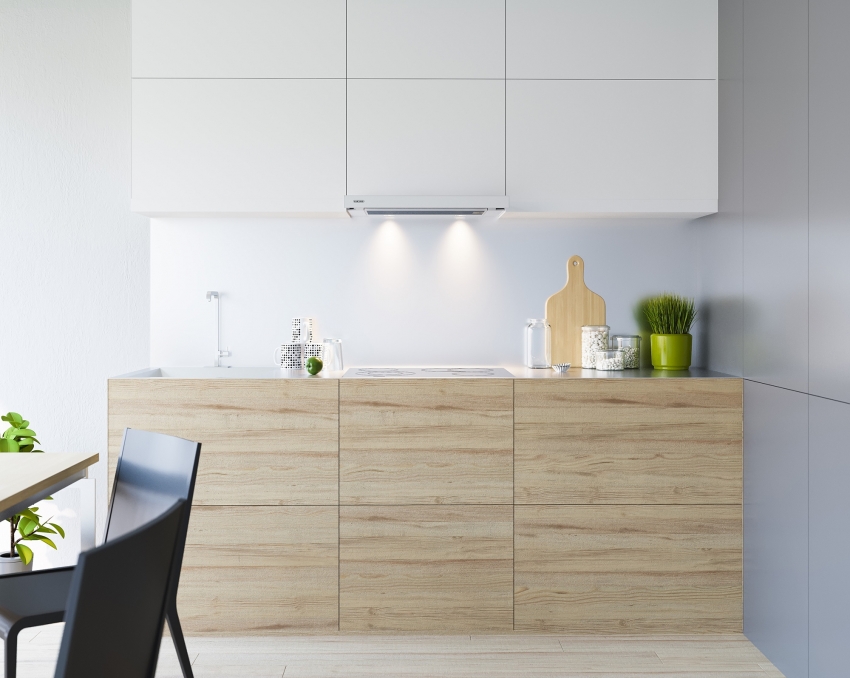
Thanks to their compact size, Gorenje hoods are almost invisible, but at the same time powerful enough
Built-in hoods Elikor: consumer reviews
Elikor is becoming very popular in the global home appliance market. The manufacturer uses high quality materials such as glass, wood, metal for the manufacture of its products. Reliable, stylish and functional Elikor equipment belongs to the middle price category.
Numerous positive customer reviews have a 50 cm hood built into the Elikor Integra GLASS 50 cabinet, which is capable of operating almost silently with a capacity of 350 m³ / hour. It has a slide control and is equipped with a metal grease filter. Lighting is provided by halogen lamps.You can buy a 50 cm hood for the kitchen of this brand at a price of 4.5 thousand rubles.
One of the best hoods that works in recirculation mode is the Elikor Integra 60 model. Consumers note a good combination of affordable price and high quality of the device. The Elikor hood price starts from 2,5 thousand rubles. It is ideal for small kitchens and is able to cope with air purification of the declared volume. The extraction capacity is 400 m³ / hour.
Choosing the right built-in hood is not an easy task. The first step is to calculate the required performance. And then, from a number of proposed models, choose the most suitable option, which is ideal for a particular kitchen. Many well-known manufacturers are trying to improve their products every year. Today, you can choose a model of an exhaust device that will perfectly fit into the interior, will be convenient and comfortable to use and will cope with air pollution of any concentration of harmful substances, purifying it to the requirements of the standard.
